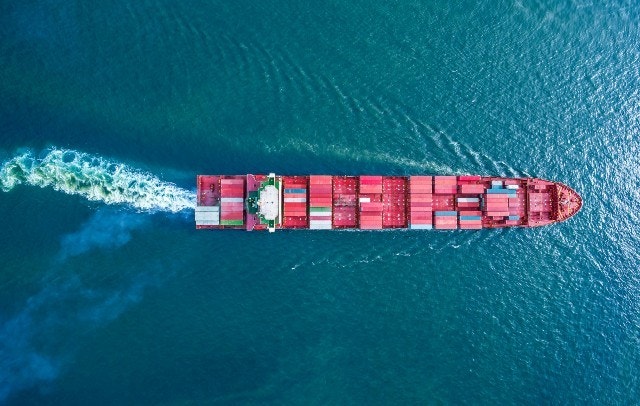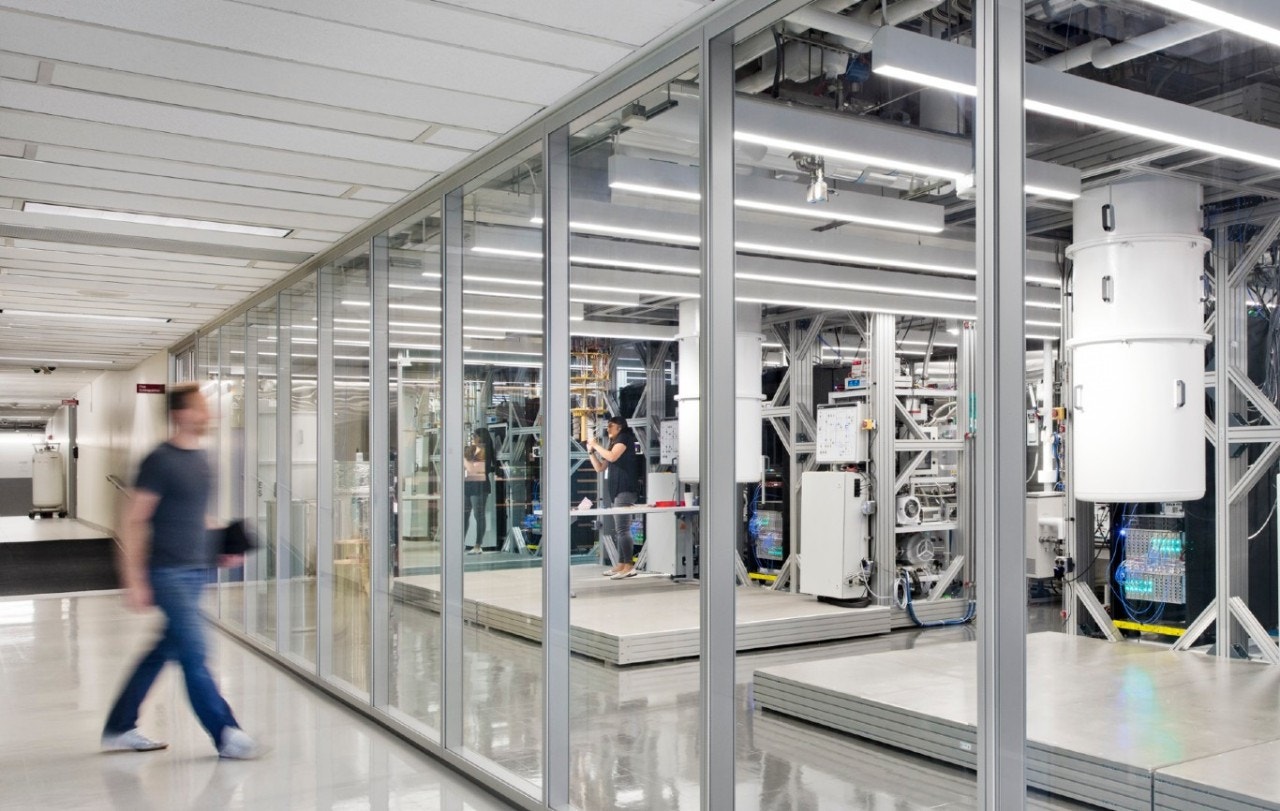Moving the world’s energy products across the globe is a complex puzzle that could benefit from a quantum solution
According to ExxonMobil, a significant portion of the global population faces daily challenges in accessing energy, impacting public health and preventing many from fully realizing their potential. Energy challenges will become even greater as global population grows, from 7.5 billion today to a projected 9.2 billion by 2040.
ExxonMobil’s leaders refer to this as society’s “dual challenge,” to provide reliable and affordable energy to a growing population, while also reducing environmental impacts and the risks of climate change.
“One near-term way to tackle that challenge is natural gas which emits up to 60% less greenhouse gases than coal. Making the switch from coal to natural gas for power generation will improve air quality and reduce carbon intensity,” says Dr. Vijay Swarup, ExxonMobil Vice President of Research and Development. “But the issue isn’t just one of production – it’s also a problem of transportation.”
Shipping LNG isn’t like shipping sneakers. LNG needs to be shipped ‘just in time’ as it is consumed, or people run out of power. Efficient shipping is absolutely critical.
2^1,000,000
Number of combinations of decisions in a global LNG shipping network is 2^1,000,000
2^270
Number of atoms that exist in the universe is 2^270
Is your organization ready for quantum computing? Download the report
In 2021 more than 500 LNG ships are used to transport critical fuel supplies across the oceans. Together, they make thousands of journeys per year to destination ports where the LNG is deployed to power critical infrastructure.
Finding optimal routes for a fleet of such ships can be a mind-bendingly complex optimization problem. To efficiently transport LNG, each ship’s position must be accounted for on each day of the year, along with the LNG requirements of each delivery site.
Right now, this kind of problem can’t be solved exactly using classical computing. Even with a simplified problem involving just dozens of ships, the number of possible combinations of different decisions can reach 21,000,000. That’s greater than the total number of atoms in the universe.
Classical computers can tackle versions of this problem by breaking it down into digestible chunks and applying state-of-the-art mathematical methods. Even with this approach, it can take many hours to produce a useful solution, let alone an optimal one.
Scale up the problem to a larger fleet, or introduce uncertainties like weather or fluctuations in demand, and a problem this size rapidly becomes intractable - running up against the hard limits inherent to even the most advanced classical computing systems.
Quantum computers take a new approach to addressing this sort of complexity, with the potential to find solutions that classical supercomputer alone cannot handle. Industry leaders like Exxon are getting involved now to explore how blending classical and quantum computing techniques might solve big, complex, pressing global challenges.
Whole classes of optimization problems are close to impossible to solve exactly under the current paradigm, requiring businesses and institutions to accept a level of uncertainty and inefficiency in their processes. Though still in its infancy, quantum computing offers a revolutionary new approach that may help alleviate this challenge in the future.
Teams at IBM Research and ExxonMobil Corporate Strategy Research have collaborated to model maritime inventory routing on quantum devices, analyzing the strengths and trade-offs of different strategies for vehicle and inventory routing, and laying the foundation for constructing practical solutions for their operations.
As IBM’s quantum hardware scales rapidly – from small prototype systems to more promising larger devices – researchers are excited about the possibility to one day handle previously insoluble routing problems.
“By partnering with IBM Quantum, our aim is to ultimately level-up our ability to tackle more complex optimizations,” says ExxonMobil’s Swarup. “To solve bigger problems and make bigger differences.”
For ExxonMobil, quantum computing’s applications will range far beyond the coordination of ships at sea. Quantum could provide new capabilities to simulate chemistry, leading to developments in energy sustainability and efficiency. Quantum could support discoveries necessary to develop large-scale carbon capture, or help identify new catalysts and active materials for low energy processing.
ExxonMobil relies on IBM to design and relentlessly improve the quantum hardware and software. And ExxonMobil researchers work alongside IBM experts to develop and test new generations of algorithms.
“Even at this early stage, we’re discovering that quantum computing inspires different ways of thinking that are uniquely suited to its specific powers. We know in our bones that there are huge global challenges that we will tackle in the foreseeable future. When quantum computing scales to become utterly disruptive, we’ll be ready.”
Learn more about how ExxonMobil & IBM are exploring quantum algorithms to solve routing formulation.
ExxonMobil’s quantum team is composed of applied mathematicians, optimization experts, computational chemists and other scientists who can do the fundamental research needed on new algorithms but have line of sight to what matters in energy. That perspective has been a benefit not just to ExxonMobil’s own research, but to the entire IBM Quantum Network community. In a short time, they’ve begun engaging and collaborating with the entire network, and often posing thoughtful questions to others in the community.
Like ExxonMobil, most of the members of the IBM Quantum Network are facing real-world challenges they’ve been trying to solve for years. Now they’re getting ahead of the game: Developing quantum tools today that will be ready for action as soon as IBM Quantum’s growing suite of quantum computing hardware achieves the requisite scale and capacity, defined in their development roadmap.
ExxonMobil, one of the world’s largest publicly traded energy providers and chemical manufacturers, develops and applies next-generation technologies to help safely and responsibly meet the world’s growing needs for energy and high-quality chemical products.
About IBM Quantum Network
IBM Quantum Network is a community of Fortune 500 companies, academic institutions, startups and national research labs working with IBM to advance quantum computing.
Are you ready?
In the next 10 years, quantum computing will transform business and society. Organizations that don't act now will be left behind.
Legal
© Copyright IBM Corporation 2020. IBM Corporation, IBM Cloud, New Orchard Road, Armonk, NY 10504
Produced in the United States of America, March 2020.
IBM, the IBM logo, ibm.com, IBM Cloud, and IBM Food Trust are trademarks of International Business Machines Corp., registered in many jurisdictions worldwide. Other product and service names might be trademarks of IBM or other companies. A current list of IBM trademarks is available on the web at “Copyright and trademark information” at https://www.ibm.com/legal/copyright-trademark.
This document is current as of the initial date of publication and may be changed by IBM at any time. Not all offerings are available in every country in which IBM operates.
The performance data and client examples cited are presented for illustrative purposes only. Actual performance results may vary depending on specific configurations and operating conditions. THE INFORMATION IN THIS DOCUMENT IS PROVIDED “AS IS” WITHOUT ANY WARRANTY, EXPRESS OR IMPLIED, INCLUDING WITHOUT ANY WARRANTIES OF MERCHANTABILITY, FITNESS FOR A PARTICULAR PURPOSE AND ANY WARRANTY OR CONDITION OF NON-INFRINGEMENT. IBM products are warranted according to the terms and conditions of the agreements under which they are provided.



